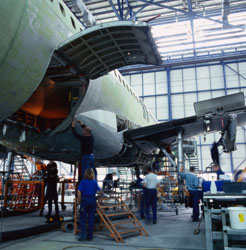Preventive medicine for healthier aeroplanes
Structural health monitoring (SHM) is an excellent tool to accomplish these goals. It is sort of an extension of non-destructive testing (NDT), a host of techniques to evaluate materials for defects using advanced imaging and diagnostic technologies. SHM incorporates sensors and potentially ‘smart’ materials with computation and data processing in real-time for monitoring and diagnosis of the structural integrity of parts and whole systems. European researchers initiated the ‘Structural monitoring with advanced integrated sensor technologies’ (SMIST) project to integrate the most advanced sensor technologies into aircraft structures for tremendous reductions in maintenance cost, downtime and weight. Sensor technologies relied on a variety of different types of signals indicating structural defects long before catastrophic failure. Overall, scientists studied, modified and developed eight different state-of-the-art sensor systems important in NDT and SHM. A novel method for application of fibre-optic–based fibre Bragg gratings (FBGs) using patches was filed for patenting. Acoustic emissions and acousto-ultrasonics (AE/AU) technology, among the most common for SHM of aerospace structures, relied on the sound produced by discontinuities to detect potential damage. Two more patents were filed regarding AE analysis technology. A fourth patent was filed based on a new sensor for crack detection based on sensitive (so-called smart) coating technology and micro-environmental degradation monitoring. Overall, the SMIST consortium developed, applied and tested numerous state-of-the-art sensors to be used in SHM of aircraft resulting in submission of four patent applications. Potential for reduction in operating costs could be up to 20 % in the short term and as much as 50 % in the long term as a result of lower fuel consumption, maintenance costs and general operation costs.

